Modell des Monats März 2024 Die Henschel Hs 123
Always at the forefront...
The Henschel Hs 123
From original to model
The more than 1,000 scale models, primarily of the international standards 1/72, 1/48 and 1/32, are an independent part of the collections of the Aviation Museum Hannover-Laatzen.
Such true-to-original miniatures allow viewers of technology history to gain an "overview", not only of the individual exhibit (sometimes even as the only possibility of a real three-dimensional display if there is no surviving original), but also of the lines of development of aircraft construction through possible sequencing and juxtaposition. Sometimes they even close gaps in the presentation of the originals. The quality of their craftsmanship alone is a pleasure to behold.
In this article in our 'Model of the Month' series, we present the Henschel Hs 123 all-metal biplane, the first dive bomber of the Second German Air Force and then used extremely successfully for almost a decade, primarily as a ground fighter, but also as a local reconnaissance aircraft and as a jamming and auxiliary towing aircraft.
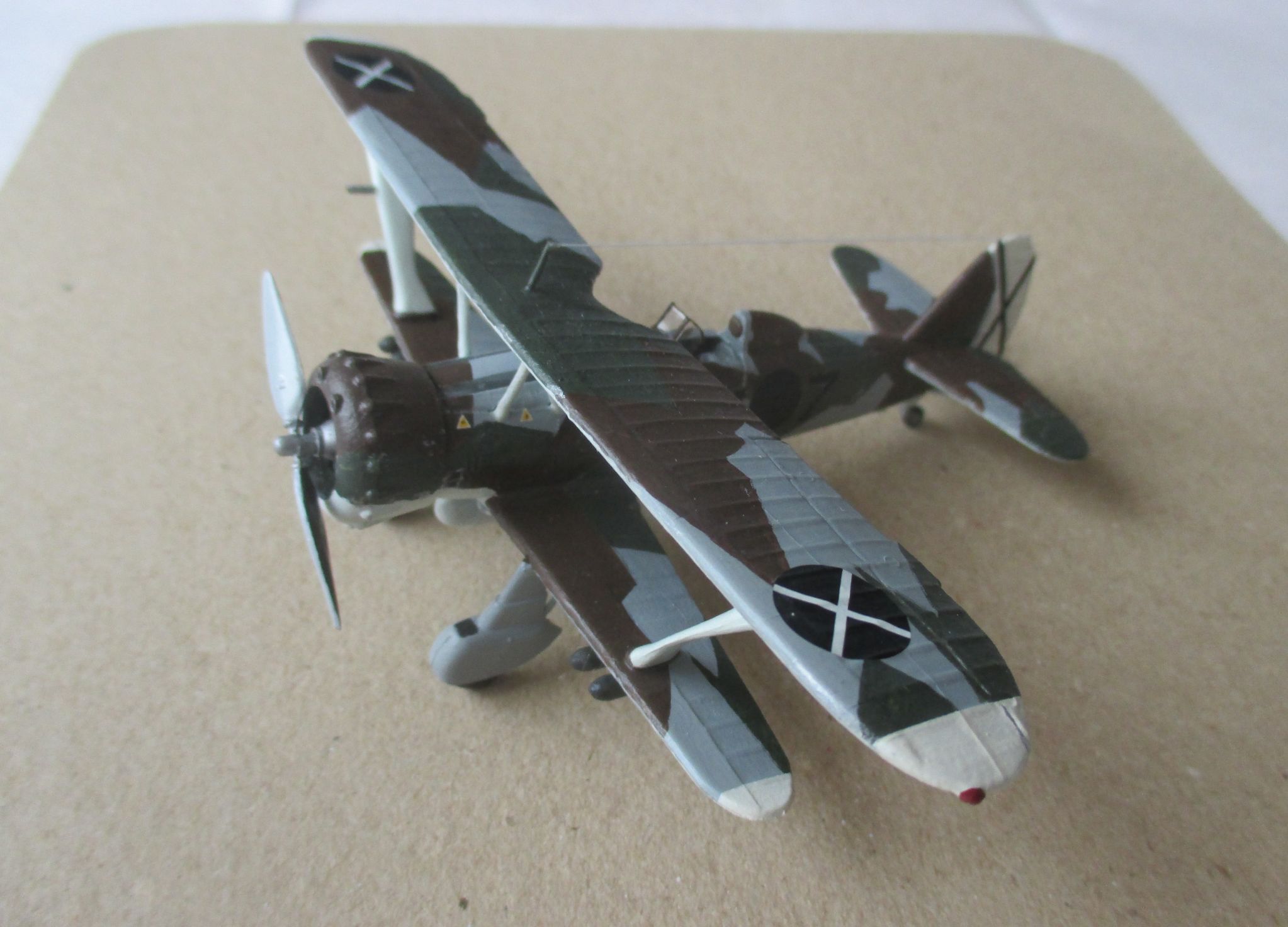
The models: True to the original!
The museum shows the type in almost all kind of use, markings and color schemes in its 1/72 model showcases in both halls, from the first series machines of the air force under construction to the Condor Legion of the Spanish Civil War to the combat aircraft in the Russian campaign, from special paint schemes to the "greyed veteran".
The miniatures are almost always based on the classic kit from the traditional British company Airfix. Over the decades, this kit has only been provided with new decals sets, but the fit and detailing of this kit can still be maintained today and at the same time offer experienced model builders the opportunity to supplement and optimize their kits.
The original: The idea
How can a bomb be delivered to its target with the highest possible precision and the smallest possible attack surface with the least amount of material and personnel? The US Navy experimented with this around 1932 when building up its aircraft carrier flotilla with dive bombers. Japan, France and Poland followed. Ernst Udet, the most successful surviving fighter pilot of the First World War and later General Aviation Master of the German Air Force, brought this constructive idea of a "Stuka" back to Germany from a trip to the USA. For the second German air force, which was still being built up, this technique of pinpoint attacks at low cost was highly attractive, as it fitted in perfectly with the developing strategy of „Blitzkrieg“ and was able to compensate for the material superiority of its European neighbors. Several proved German aircraft manufacturers then developed such aircraft. But the first fully-fledged attempt came from a newcomer to this industry...
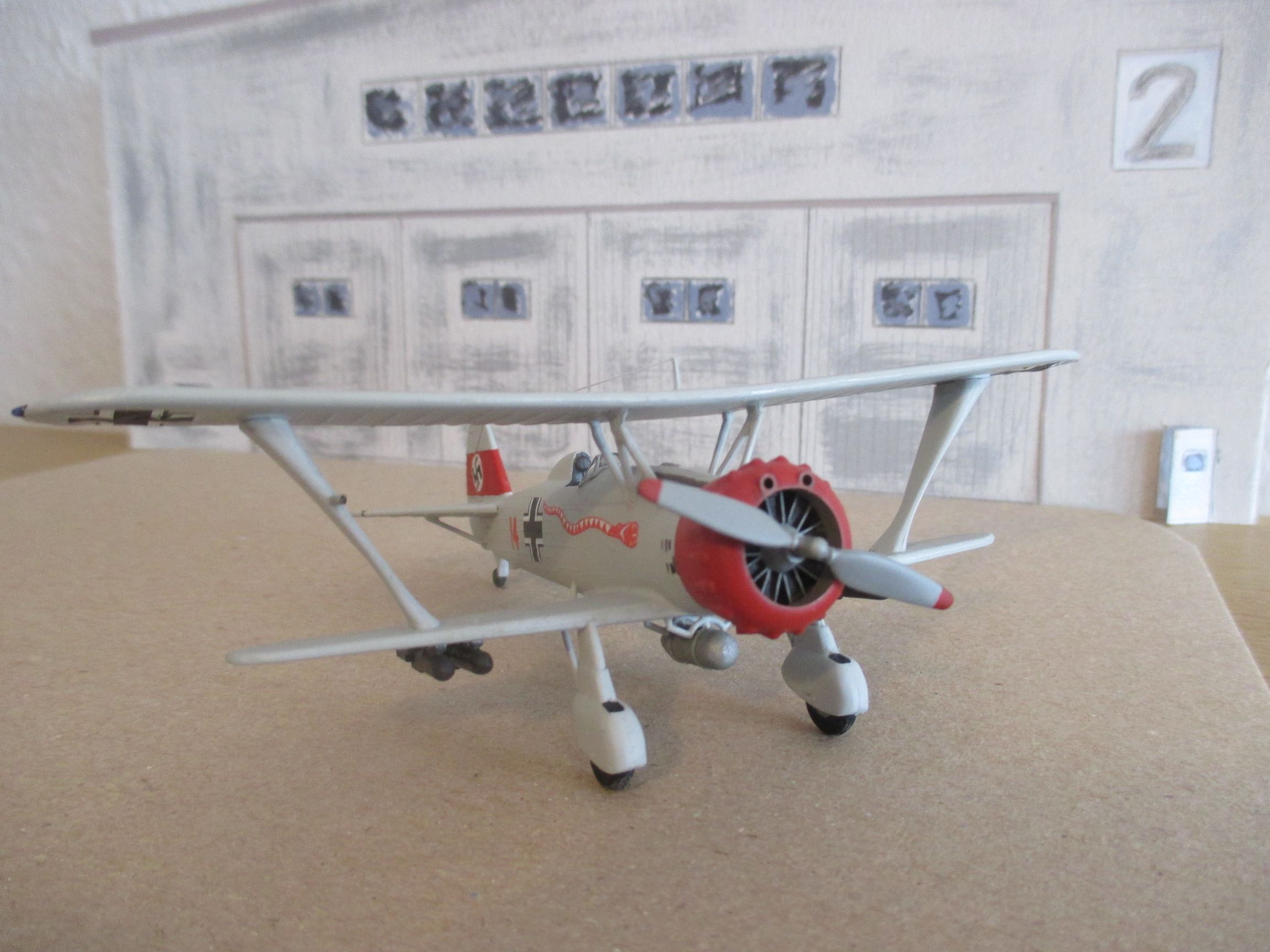
Tradition & modernity
The Henschel-Werke in Kassel emerged from the mechanical engineering and metal casting company Henschel & Sohn, founded in 1810. Europe's largest locomotive manufacturer in the 19th century, the Henschels then went on to produce steam engines and other internal combustion engines as well as trucks and buses with great success. In the 1930s, the aircraft construction division was finally added, which was located in Berlin-Schönefeld. German rearmament under the National Socialists led to the development of the company's own training, reconnaissance and bomber aircraft, in addition to the licensed construction of the civilian Junkers W 34, among others. The first of a total of three very successful models was the Hs 123.
Designed in 1934 by Friedrich Nicolaus as a single-seat, all-metal biplane (strictly speaking a one-and-a-half-decker) in shell construction with an open cockpit and rigid landing gear, powered by a cowled 9-cylinder BMW 132 radial engine, the type made its maiden flight in 1935. As a dive bomber, the aircraft was structurally extremely robust - remember, the Henschels built locomotives - and equipped the German Air Force with its first "Stuka" type from 1936.
Proven
In 1937, a few examples of the A-1 series were transferred to the Condor Legion in the Spanish Civil War, where they proved themselves so extensively that, unlike almost all other German types used, their operational experience did not lead to any modifications: there was nothing to improve...
A total of 28 aircraft were transferred and later purchased by the Spanish Air Force. A further 12 aircraft were exported to China.
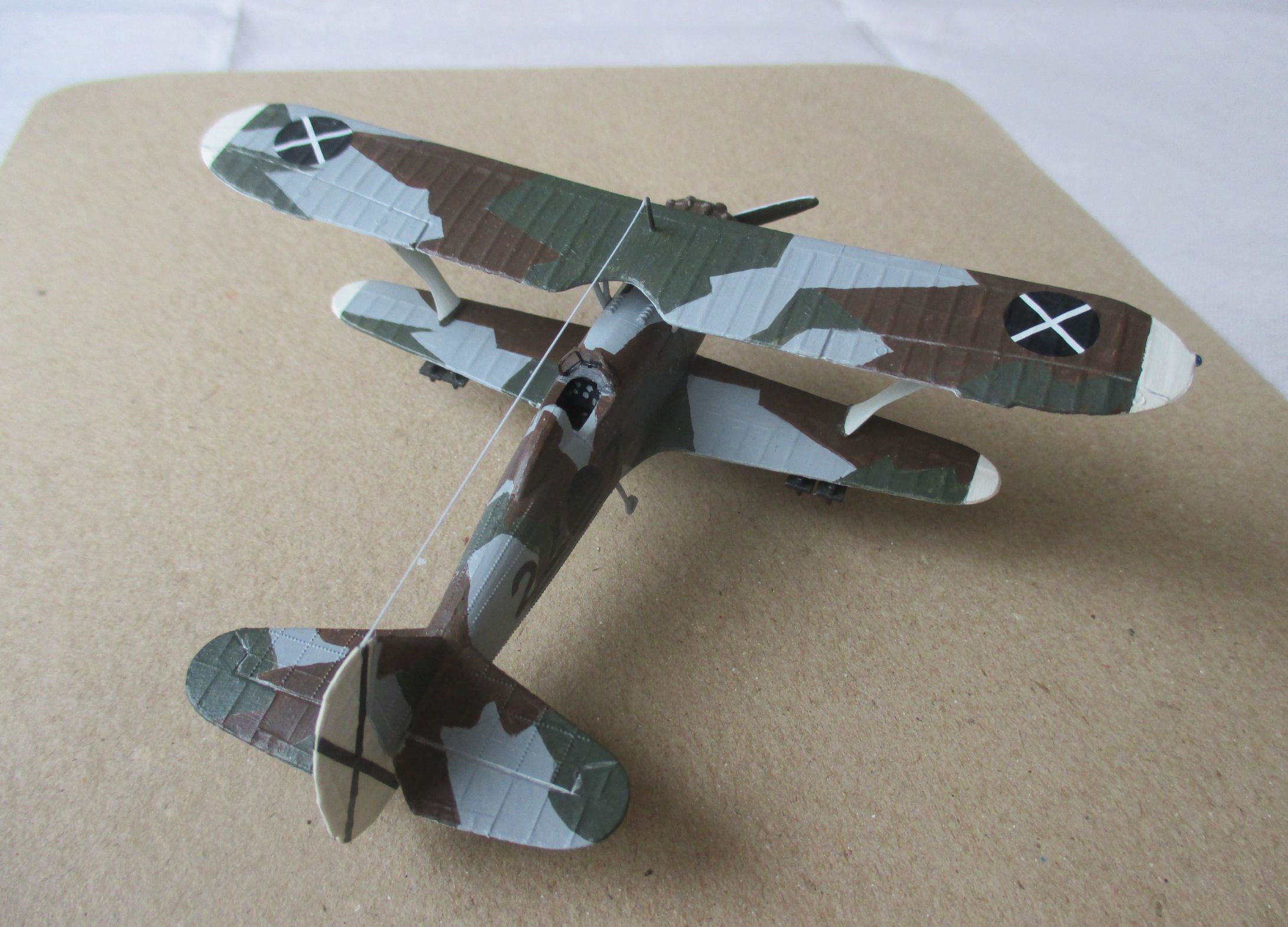
In the meantime, however, the Junkers Ju 87, which had also been tested in Spain, became the new standard model for the Luftwaffe's Stuka units, and the Hs 123 was relegated to the second rank and was subsequently intended for close support of the army units, or as the official, martial parlance put it: as a "battle fighter". In this function as a ground fighter, an air force group with this type also successfully took part in the Polish campaign in 1939 and, although technically outdated, was subsequently also used in the Western campaign against Belgium, France and the Netherlands in 1940. Correct guess: With such great success that the planned decommissioning of the type or transfer to flight schools was postponed again.
Always at the forefront
The Balkan campaign of spring 1941 again saw the „Schlachtfliegergruppe“ operating reliably under the most difficult geographical and climatic conditions, while the newer and more powerful types, although dependent on optimal conditions, paid tribute to the circumstances. And this is where the army units began to call for the battle aviation units to be reinforced, particularly with the Hs 123. However, this was in vain - in view of the success of the Ju 87, the assembly lines for the "123" had already been dismantled at Henschel and the tools had been ground down. No more than 265 examples had left the assembly lines between 1936 and '37, earning the design a reputation among the Wehrmacht and its opponents that far exceeded this number.
When the Russian campaign began on June 22, 1941 with the Wehrmacht's invasion of the allied Soviet Union, the Hs 123 once again proved to be extremely valuable in the Luftwaffe arsenal. Not only did they remain technically unimpressed by even the most difficult conditions, but they could also be used in a variety of mission profiles - from the Stuka to the fighter-bomber role, earth fighters, reconnaissance aircraft and provisional towing aircraft for cargo gliders. Finally, they continued to fly night raids against the Red Army until the end of the war. The latter cursed the Hs 123 - and paid great respect to its value and efficiency: the highest praise a fighter aircraft can receive is that of the enemy.
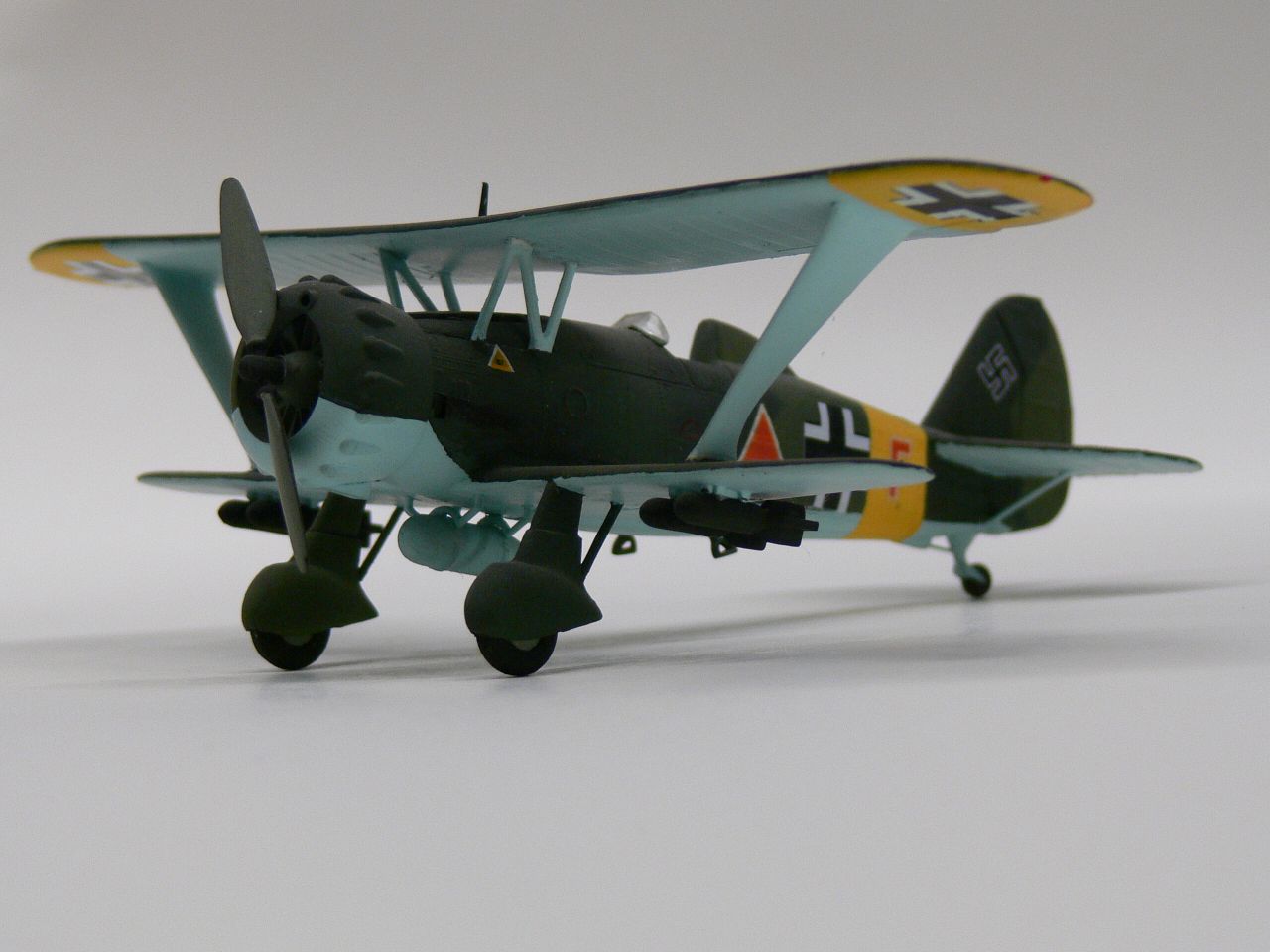
Ultimately, all traces of this remarkable aircraft were lost in the final weeks of the Second World War; to our knowledge, no examples have survived.
Data sheet Henschel Hs 123 A-1:
Length: 8.33 m; wingspan: 10.50 m; flight weight: 2,110 kg; top speed: 342 km/h; range: 850 km; power: 1 x 9-cylinder BMW 132 with max. 850 hp; crew: 1, armament (standard): 2 x 7.9 mm MG, 4 x 50 kg bombs.
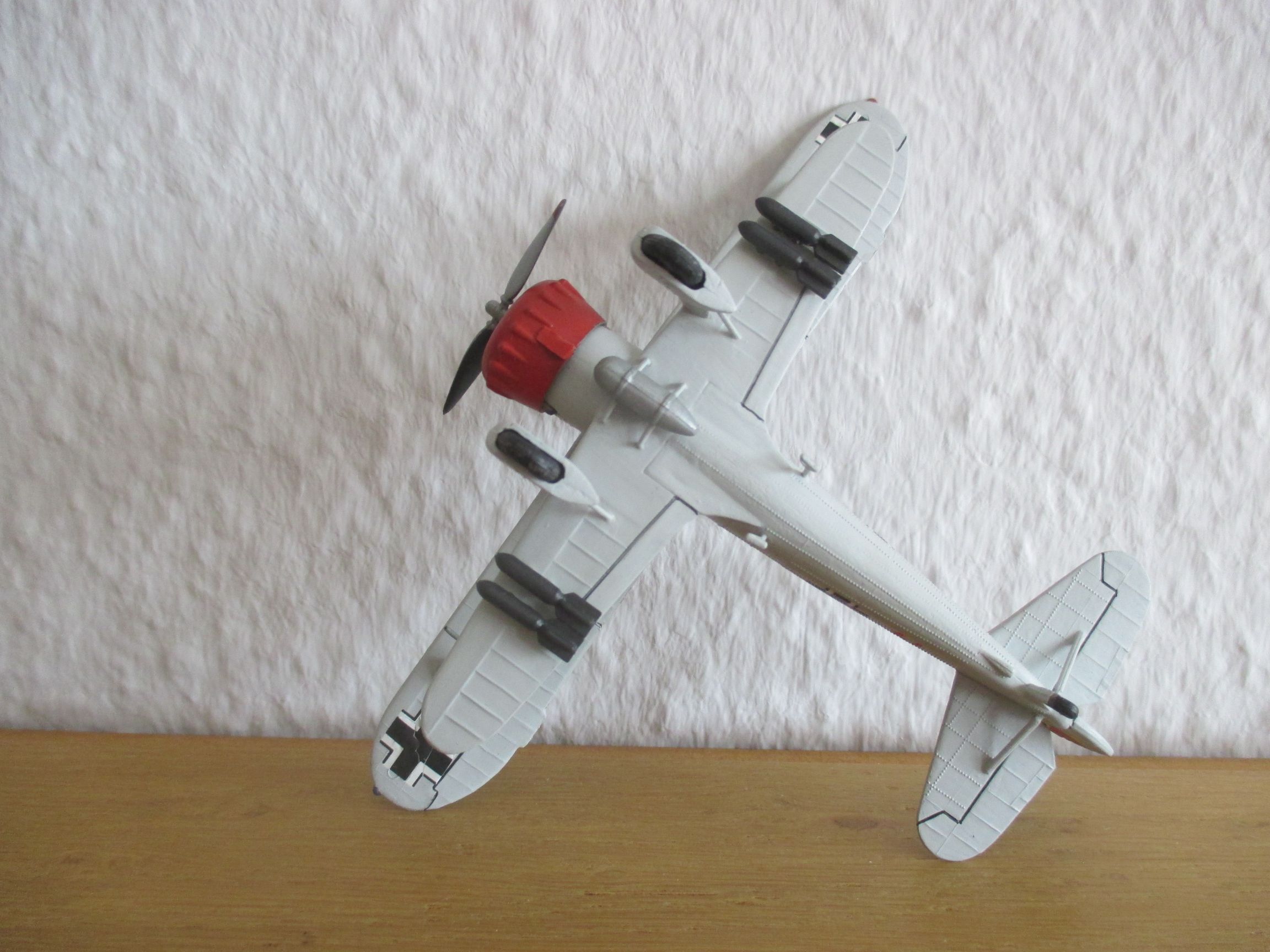
Have we been able to arouse your curiosity about our collections with over 40 originals and faithful replicas, just as many engines and hundreds of items of equipment as well as our model collection? Then we look forward to your visit to Ulmer Straße at the Hannover exhibition grounds: See you there!
sb
Kontakt zum Autor der Modell-des-Monats-Reihe können Sie hier aufnehmen: Autor-MdM
